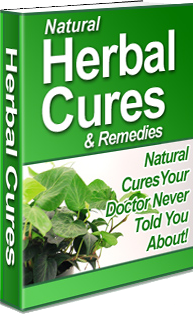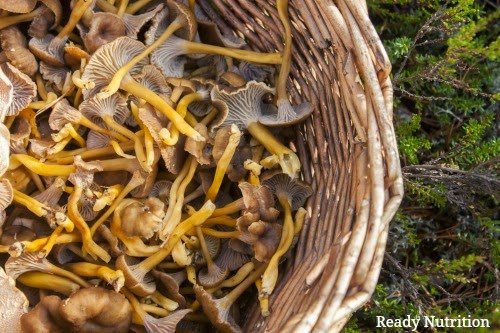Wild-Crafting Herbs: A Good Plan Yields Great Rewards
by Jeremiah Johnson
Good Day, fellow Herbalists, nature-lovers, preppers, and followers of the Naturopathic path! Today’s topic of discussion in this article is how to plan your herb-gathering excursions before the season has arrived. Although it is a relatively simple task, your organization, notes, and herb-identifying skills will need to come sharply into your focus. Then you have to put it into practice. The only thing better than a good plan is a successfully executed plan. Let’s examine one together.
Before you undertake a wild crafting herb gathering expedition, be sure to check out all local, state, and federal laws and regulations prior to taking any actions or utilizing the information in this article. Make sure you have the permission of the landowner (if done on private property) and the authorities (if public land) before touching or taking any plant for your own. Your local county extension office or state forestry service office will usually have maps and information bulletins to inform you of species that can be harvested/taken and their amounts, and protected/endangered species that cannot be disturbed.
Widget not in any sidebars
The first thing you may wish to do is invest in a good guide to identify herbs you’re seeking, one with full-color photos. The photos need to be as detailed as possible in order to accurately verify the species. I personally recommend one of the Peterson Field Guides. I have one entitled, Eastern/Central Medicinal Plants and Herbs, by Foster and Duke, ISBN 0-395-98814-4, with a cover price of $19. Although I live in Montana, almost every species I’ve wild crafted here is found within this book. By the way, the second author is Dr. James A. Duke, who is extremely well respected in the Naturopathic community for his works.
The book contains a complete description of the plant to accompany the photo, as well as its scientific name, season, uses in herbal formulations, and all cautions associated with it. After you have the book, the next step is to read it and familiarize yourself with it. When I was in school we had a list of 30 herbs used as “Materia Medica,” our primary focus/tool kit for all-around use. For your personal needs it would be good to peruse the “Index to Medical Topics” section to identify the herbs you wish to find according to their uses.
Next you’ll need a notebook of some kind, preferably pocket-sized. A second notebook (larger and more permanent) may be good for you to transfer your field notes into for your records. Some of the categories you can use are as such: name of herb identified, day and date gathered, exact time (am or pm – with some species this is important), specific location found, temperature and weather conditions, and miscellaneous notes. These categories are non-exhaustive and you can tailor-make them according to your needs and goals. Field notebooks are best done with pencil and permanent records in ink. You may also want to take a camera with you.
Part of your plan now needs to come into play: research the location where you will be wild crafting. Experience is oftentimes the best teacher; therefore, it would behoove you to find someone in the local area who knows what you are looking for. Use your library and your computer to find where the species you are searching for live in your area and when they come into season. One of the coolest things about all of this groundwork is when you actually come upon the target-herb face-to-face (or face-to-flower!) for the first time in the wild…and you recognize it. This is truly rewarding.
When you formulate your list (let’s say it has a dozen plants) prioritize three or four plants to find and allow the others to just pop out and surprise you. The objective is to learn in a relaxed manner and observe the details of the ground you’re traversing. Don’t make everything revolve around your plan; rather, make the plan and use it as a tool to support your excursion. In this manner you’ll garner the maximum aesthetic benefits and productivity from the trip.
 When I transfer my information from the field notebook, I arrange it by herb, so that each plant has information pertaining to it: where I found it, and all of the details. In the rear of the notebook I also record amounts that I gathered and the method I used for preservation (tincture, dry/dehydrate, and such). By targeting what herbs you’re searching for per locale, you’ll form a pattern for yourself for future trips.
When I transfer my information from the field notebook, I arrange it by herb, so that each plant has information pertaining to it: where I found it, and all of the details. In the rear of the notebook I also record amounts that I gathered and the method I used for preservation (tincture, dry/dehydrate, and such). By targeting what herbs you’re searching for per locale, you’ll form a pattern for yourself for future trips.
Such is best done with maps. You can sketch an area you’re exploring and transfer it to a better map later. Here in Montana the forestry service has free maps for fire breaks and primitive trails that are really good; I place the name of the herb in the vicinity I have found it by number on the map and attach a key with the corresponding herb next to its number. This enables me to just look at the map without sifting through my notes when I am deliberating where to explore.
Equipment you’ll need is simple and basic. You’ll want to obtain a good, comfortable pair of hiking shoes that provide support and protection. I also advise wearing long pants and a long-sleeved shirt to protect from thickets. A canteen or camelback is advisable to take with you. Remember, you’re on an excursion and thirst is a late sign of dehydration. A good hat to block the sunlight is also recommended. Your excursions should come in two phases: recon and gathering.
Of immense help in gathering will be to perform an “herbal reconnaissance,” so to speak: walk the ground even before the herbs appear and learn its idiosyncrasies and features. Some of the plants may even be recognizable before they’re in full flower. Learn the trails, water features, and the terrain in order to maximize your “gathering phase.” A compass and detailed terrain map of the area should also be considered. You can note down all of this information in your field notebook and use it for future reference and records.
A few words on mushrooms: if you are searching for them you must be precise and exact! Do not attempt to gather (let alone eat) any of the fungi unless you can definitively and precisely identify them with a guide with color photos! The mushrooms can be the deadliest things you can shake a stick at. Personally I have about half a dozen I am familiar with; nevertheless, even with them, I look at my guide until I’m 100% sure.
On your gathering phase (optimal when the herbs are flowering) bring some brown sandwich-type bags with you to collect your herbs. The paper is non-reactive and will not leach into the herb as with plastics. Also, plastic bags (when exposed to sunlight) with herbs in them will act in a “greenhouse” fashion to trap in heat and moisture that can ruin your herbs. A good pair of scissors, a pocketknife, a small garden hand-shovel, and a three-tined weed claw are tools you may wish to consider, along with a light backpack to stow them all in. I also use a drywall (notching) saw (about 10” long) for tough plants with woody stalks.
You’ll need the small digging tools for herbs that require the roots for herbal formulations. When the plants are found, balance your needs with nature: don’t take the hardiest plants, and just take a few when you find a group. If you see one or two growing alone, leave them be; let them reproduce and build up the species in that area for next year. Finally, I’ll add that you should study and restudy all of your targeted herbs and their characteristics. Commit all of this information to memory and then your photos will just confirm your find.
Make a good, solid plan for yourself and may you be richly rewarded in your wild crafting adventure. Have a great day!
 The information presented herein is only for informational purposes and is not meant to diagnose, treat, advise, or prescribe any condition or action, medically or otherwise, for anyone. Only a qualified, licensed, certified, approved physician can do such. Prior to taking any actions or utilizing any herbal foods, ask for your doctor’s approval. Consult with a physician prior to undertaking any walking, hiking, or activity he may deem strenuous as outlined herein. Check with all local, state, and federal laws and authorities as mentioned earlier prior to your herbal excursion.
The information presented herein is only for informational purposes and is not meant to diagnose, treat, advise, or prescribe any condition or action, medically or otherwise, for anyone. Only a qualified, licensed, certified, approved physician can do such. Prior to taking any actions or utilizing any herbal foods, ask for your doctor’s approval. Consult with a physician prior to undertaking any walking, hiking, or activity he may deem strenuous as outlined herein. Check with all local, state, and federal laws and authorities as mentioned earlier prior to your herbal excursion.
Jeremiah Johnson is the Nom de plume of a retired Green Beret of the United States Army Special Forces (Airborne). Mr. Johnson was a Special Forces Medic, EMT and ACLS-certified, with comprehensive training in wilderness survival, rescue, and patient-extraction. He is a Certified Master Herbalist and a graduate of the Global College of Natural Medicine of Santa Ana, CA. A graduate of the U.S. Army’s survival course of SERE school (Survival Evasion Resistance Escape), Mr. Johnson also successfully completed the Montana Master Food Preserver Course for home-canning, smoking, and dehydrating foods.
Mr. Johnson dries and tinctures a wide variety of medicinal herbs taken by wild crafting and cultivation, in addition to preserving and canning his own food. An expert in land navigation, survival, mountaineering, and parachuting as trained by the United States Army, Mr. Johnson is an ardent advocate for preparedness, self-sufficiency, and long-term disaster sustainability for families. He and his wife survived Hurricane Katrina and its aftermath. Cross-trained as a Special Forces Engineer, he is an expert in supply, logistics, transport, and long-term storage of perishable materials, having incorporated many of these techniques plus some unique innovations in his own homestead.
Mr. Johnson brings practical, tested experience firmly rooted in formal education to his writings and to our team. He and his wife live in a cabin in the mountains of Western Montana with their three cats.
This information has been made available by Ready Nutrition
Originally published March 24th, 2015
If you found this article useful, please Vote for Ready Nutrition as a top prepper web site.



